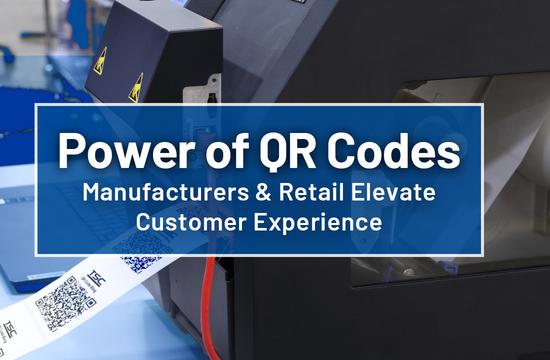Welcome to Our Blog
Get the latest information on new products and solutions, trending industry topics, best practices, tips and tricks, and much more.
Automotive
1429
/en/blog/automotive
Barcode Inspection
418
/en/blog/barcode-inspection
Cannabis
1430
/en/blog/cannabis
Company News
415
/en/taxonomy/term/415
Events and Tradeshows
1421
/en/blog/events-and-tradeshows
Food & Beverage
1426
/en/blog/food-beverage
Healthcare
1425
/en/blog/healthcare
High Resolution
414
/en/blog/high-resolution
Industry Trends
1419
/en/blog/industry-trends
Manufacturing
1424
/en/blog/manufacturing
Mobile Printing
1420
/en/blog/mobile-printing
Partner Perspectives
1461
/en/blog/partner-perspectives
Remote Printer Management
1432
/en/blog/remote-printer-management
Retail
1423
/en/blog/retail
RFID
416
/en/blog/rfid
Software Solutions
1433
/en/blog/software-solutions
Standalone
419
/en/blog/standalone
Supplies
417
/en/taxonomy/term/417
Supply Chain
1463
/en/blog/supply-chain
Tips & Best Practices
1431
/en/blog/tips-best-practices
Transportation & Logistics
1422
/en/blog/transportation-logistics
Warehouse & Fulfillment
1427
/en/blog/warehouse-fulfillment
Understanding inventory location is the key to a strong supply chain and Just-in-Time (JIT) manufacturing execution.
In this next edition of our TSC Auto ID Blog Series “Rev Up Savings,” we tackle Just In Time manufacturing for the automotive industry.
To keep your mobile printing operation running smoothly, no matter where the road takes you, the power supply must be reliable and rugged. That's why we're excited to announce the launch of two new mobile power adapters designed specifically for charging mobile printers in vehicles, including increased power for diverse fleets.
In the realm of AUTO ID technology, longevity often signifies not just survival, but thriving in a dynamic landscape. For ARKTECH, a key player in this field for over three decades, our journey has been marked by strategic alliances and impactful collaborations.
In today's fast-paced business environment, mobile printing solutions are becoming increasingly essential for field workers across various industries. However, ensuring these printers are secure and functional within the confines of different work vehicles can pose a challenge.
What is a free Quality Engineer worth to you? In this installment, we test drive that question, because the US will always be a nation of cars and drivers. A new study says roughly 95% of Americans own or have access to a car or truck and they are going places given the US boasts the largest network of roads in the world at over 4.1M miles. What keeps these cars on the road are the quality standards employed by assemblers and part makers around the world.
The concept of environmental sustainability has become increasingly important in recent years. Regulations further strengthen the circular economy to support sustainability, aiming to achieve a carbon-neutral, environmentally sustainable, toxic-free, and fully circular economy.
QR codes link buyers and sellers, enabling a conversation about a variety of specific product information. They offer an inexpensive way for manufacturers and factories to place relevant data on their products and packages before they arrive at a retailer or distributor.
Say goodbye to the frustrations of unscannable barcodes. ODV-2D technology from TSC Auto ID, an innovative barcode inspection print system, ushers in an era of operational efficiency and supply chain precision.
In the fast-paced world of business, every minute counts. When a critical printer in your high-security network goes down, the impact can be immediate and crippling. Lost productivity, delayed shipments, and frustrated customers – it's a scenario no one wants to face.
In today's world, there is a great variety of media available to meet the growing demands of diverse printing applications. While having the ability to print long labels and specific labels for various vertical market applications is important, achieving precise printing is a different challenge altogether. These labels often pose difficulties as printers are typically designed for common or frequently used media. Additionally, printers need to be able to adjust for special or difficult media. That's where the TH DH Series comes in, offering an easy solution for printing difficult labels. The TH DH Series is specially designed to provide end users with precise label printing capabilities, with vertical DPI (dots per inch) being a key factor in achieving this level of accuracy.
















































